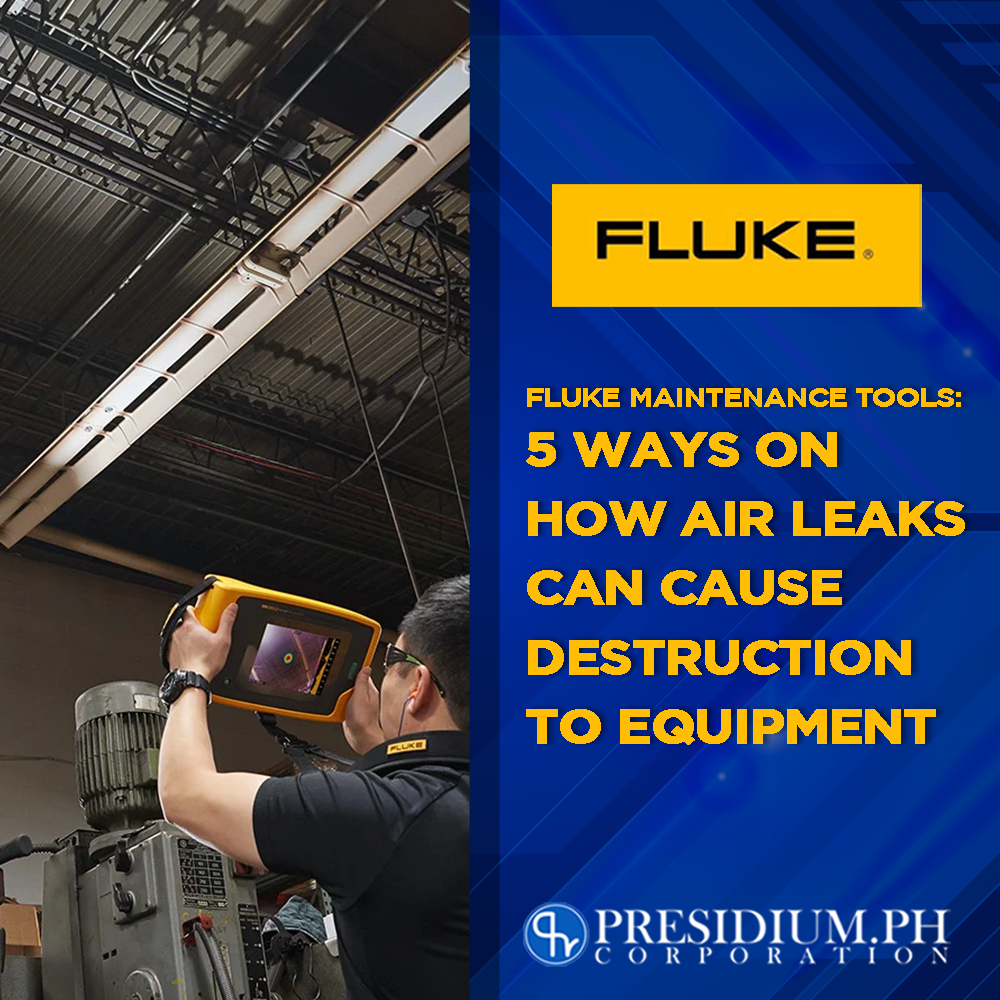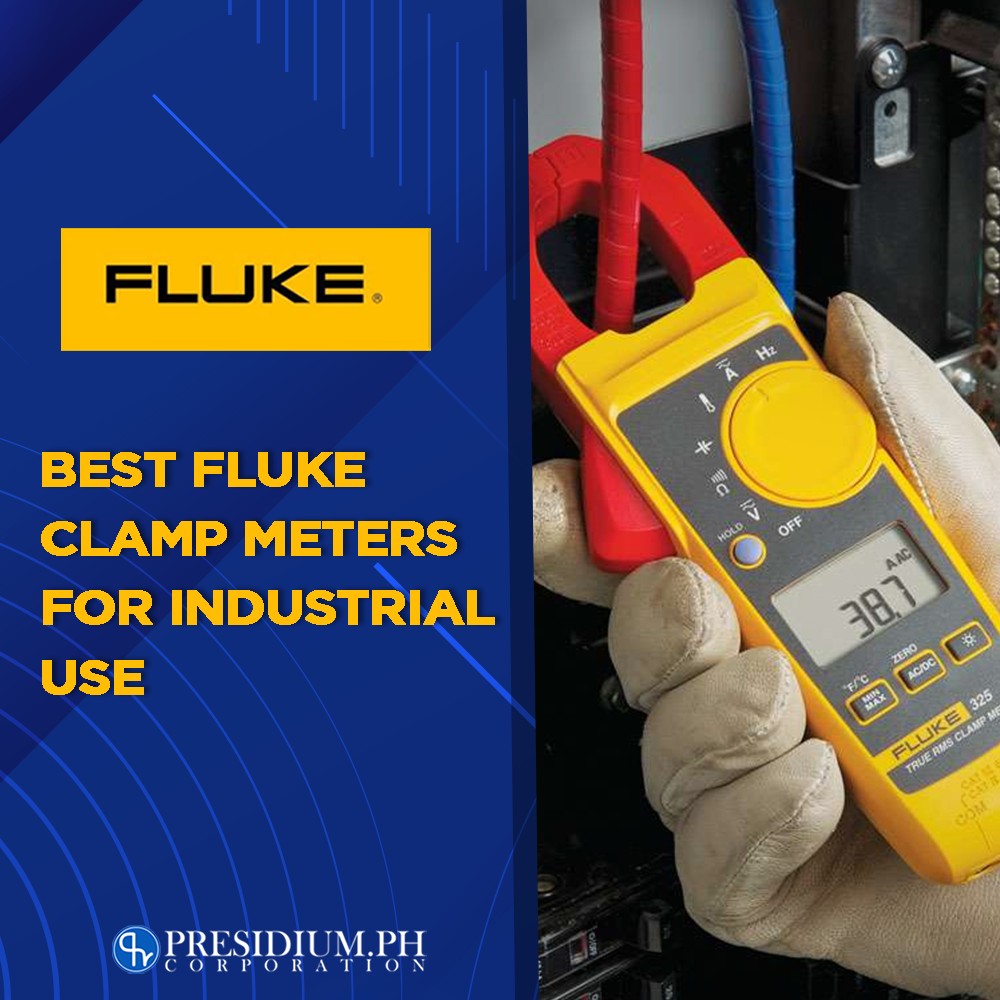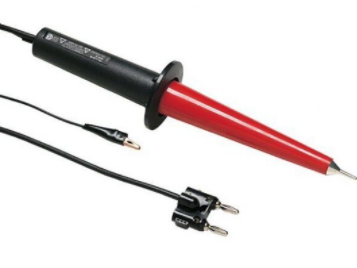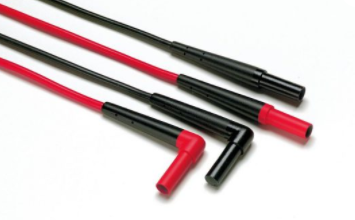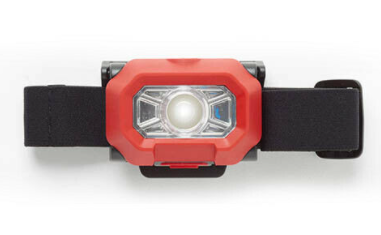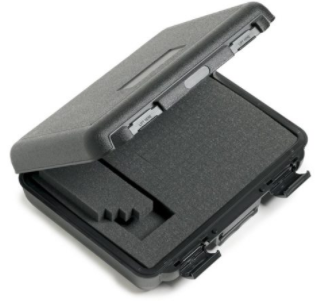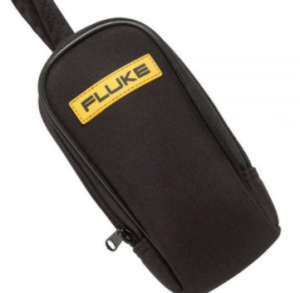5 Ways on How Air Leaks Can Cause Destruction to Equipment
What makes air leaks so bad?
Don’t underestimate the power of air especially when it’s leaking! When it comes to machines and equipment, such seemingly innocent leaks can actually cause more damage when not detected beforehand. In worse-case scenarios, air leaks can cause downtimes and performance issues that can drag an entire production down.
Did you know that if an air leak is not detected in advance, this can literally make money fly with a snap of a finger? To give you a brief idea, we’re talking about 6,000 EUR for a single 3mm leak for a year! Just think how much money could be saved when these little critters are detected in advance.
Therefore, investing in a good-performing maintenance tool is a must especially if you’re running big establishments. The Fluke ii900 Industrial Imager is built and designed to detect compressed air which makes them the perfect tool to detect air leaks even in big spaces.
What makes Fluke unique from others in the market?
It doesn’t just make maintenance of people’s jobs easier, but it also features great innovative functions. This tool has 64 directional microphones that can detect soundwaves given off by a leak that is overlaid on top of an image taken through the Fluke ii900 Industrial Camera. To top it off, this device can even detect leaks for up to 50 meters. You can easily walk around big facilities and detect even the smallest ones.
Moreover, this is also very beneficial if you’re performing rounds in hazardous environments. Feel safe and confident when resolving technical issues in the most rugged places. This device will give you the security of troubleshooting long distances. Its ability to reach far places ensures that your team or the person in charge doesn’t need to perform drastic measures to get the job done.
How do air leaks cause destruction on equipment?
Let’s get into detail on how air leaks cause havoc in different kinds of equipment. Here are some examples:
Air Leaks In Steam Systems
An expensive undertaking once leaks hit steam systems. Steam systems are usually found in establishments build for industrial use. You might think that steam is easy to make, but on the contrary, steam is actually expensive to produce. If you notice, factories and other industrial spaces are often inaccessible. The mere fact that it is not often visited by people also poses a challenge making it difficult to identify underlying issues.
The most common knowledge about air and gas leaks is that it is extremely hard to detect especially when you’re not using any equipment. Issues with steam systems alone show that they can happen in more than one place. Additionally, you should also consider the size of the place since it will prove to be more of a challenge to locate these minuscule discharges.
Places to look for air leaks in steam systems:
- Pipe fittings
- Valves
- Steam traps
With the use of the Fluke ii900 Sonic Industrial Imager, you can easily identify these and other types of air or gas leaks to keep your systems up and running efficiently.
Robotics Leaks Impact Product Quality
Robotics in factories can also experience leaks. Here, we’re going to specifically talk about pick and place robots. To summarize, these kinds of factory robots’ purpose are just to literally, pick and place things (depending on what the factory is producing). Now, one of the parts of these robots is suction cups and actuators. If these parts are weak the robots may have the tendency to drop or misplace the objects they’re carrying.
Basically, if this happens, and leaks are not detected beforehand, it’s going to cause more damage since product quality relies on these robots to get the job done. However, with the use of a Fluke ii900, situations like these can be easily prevented. Just think about checking these robots for leaks one by one. A process like that can eat time like a beast. But with an innovative device in your beck and call, you can perform troubleshooting rounds in a timely manner and with ease.
Outdoor Holding Tank Leaking Expensive Gases
The thing with outdoor holding tanks is that it’s more exposed to harmful environmental elements. Usually, holding talks is piped into the facility to power the production process. Another part of outdoor holding tanks is Argons. These are the huge tanks holding gas inside them. Coincidently, these tanks are also susceptible to leak. Keep in mind that once these things leak, money leaks with them as this kind of equipment are also costly to have. Just imagine not spotting these leaks beforehand. It’s literally going to punch a hole in bank accounts.
Pressure Regulator Corrosion
Process regulators usually contain compressed air, nitrogen, and carbon dioxide. Naturally, when process regulators start malfunctioning, and you can’t pinpoint the exact location where things are going wrong, expect that things might turn downside. As a result, this might cause the pressure regulator to corrode. And once pressure regulators corrode, they can no longer be in use.
Don’t wait for corrosion to happen. The Fluke ii900 can pinpoint even the smallest of leaks in pressure regulators. Having this device can ultimately improve downtime and quality of work.
Air Handler Ducting Leaks in Gaskets and Fasteners
Mainly, gaskets and fasteners are the tools used to attach big pieces of machinery together. No matter how small or frail they look, make up for the use they have when keeping parts attached. The downside? They are one of the main causes of air/gas leaks. Once these gaskets or fasteners are loose (or missing), this can have disastrous effects on the entire plant. How bad are we talking about? Leaks with gaskets and fasteners have the potential to shut down the plant or cause environmental discharge.
Get the best of the best!
Presidium PH is the #1 Fluke distributor in the Philippines. There is a wide selection of Fluke tools for you to choose from! No doubt, all of them are the best performing in the market. Moreover, get to know more about their cool functions and other applications. You might be surprised how Fluke is raising the bar for test tools in the Philippines.

